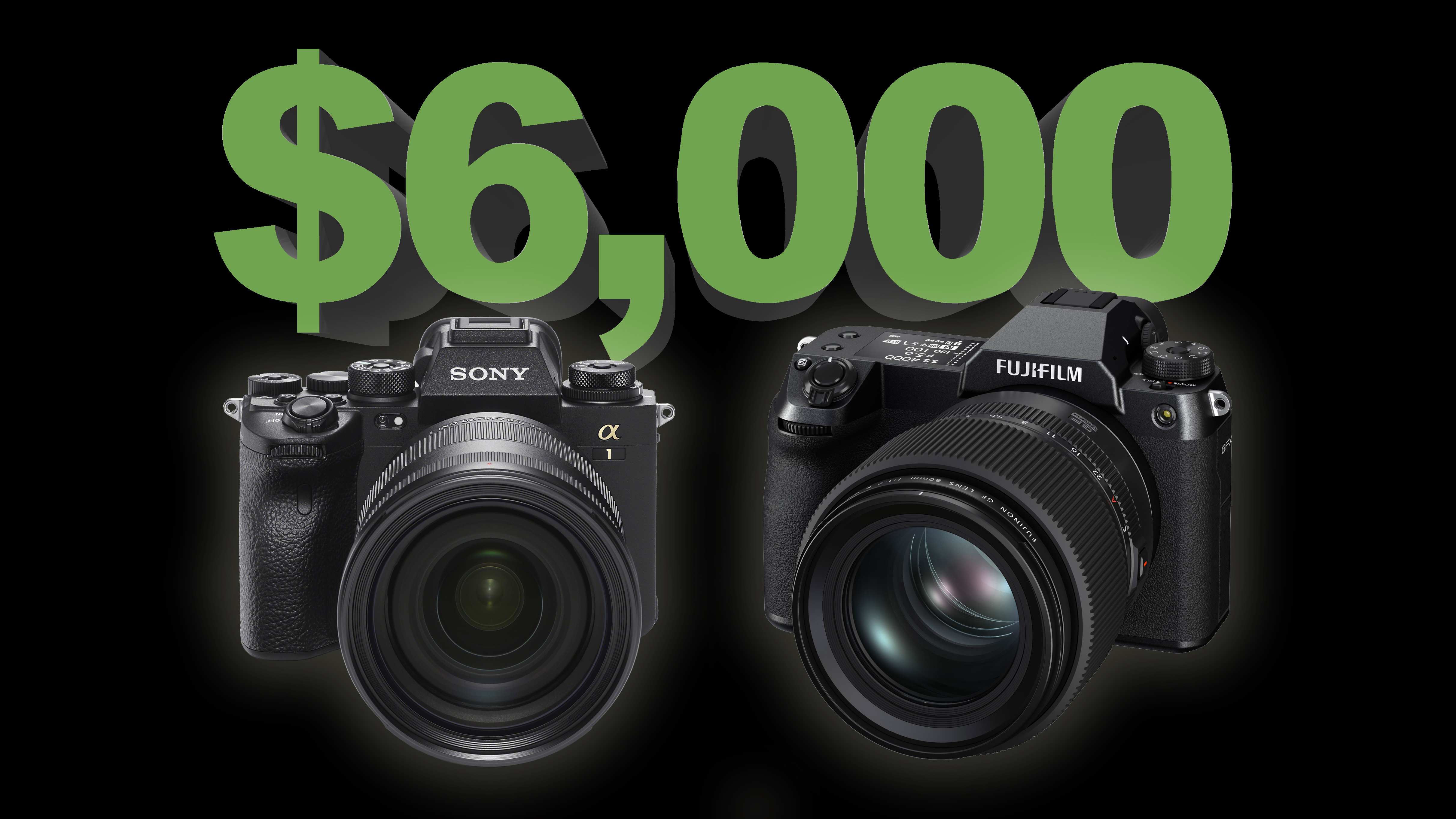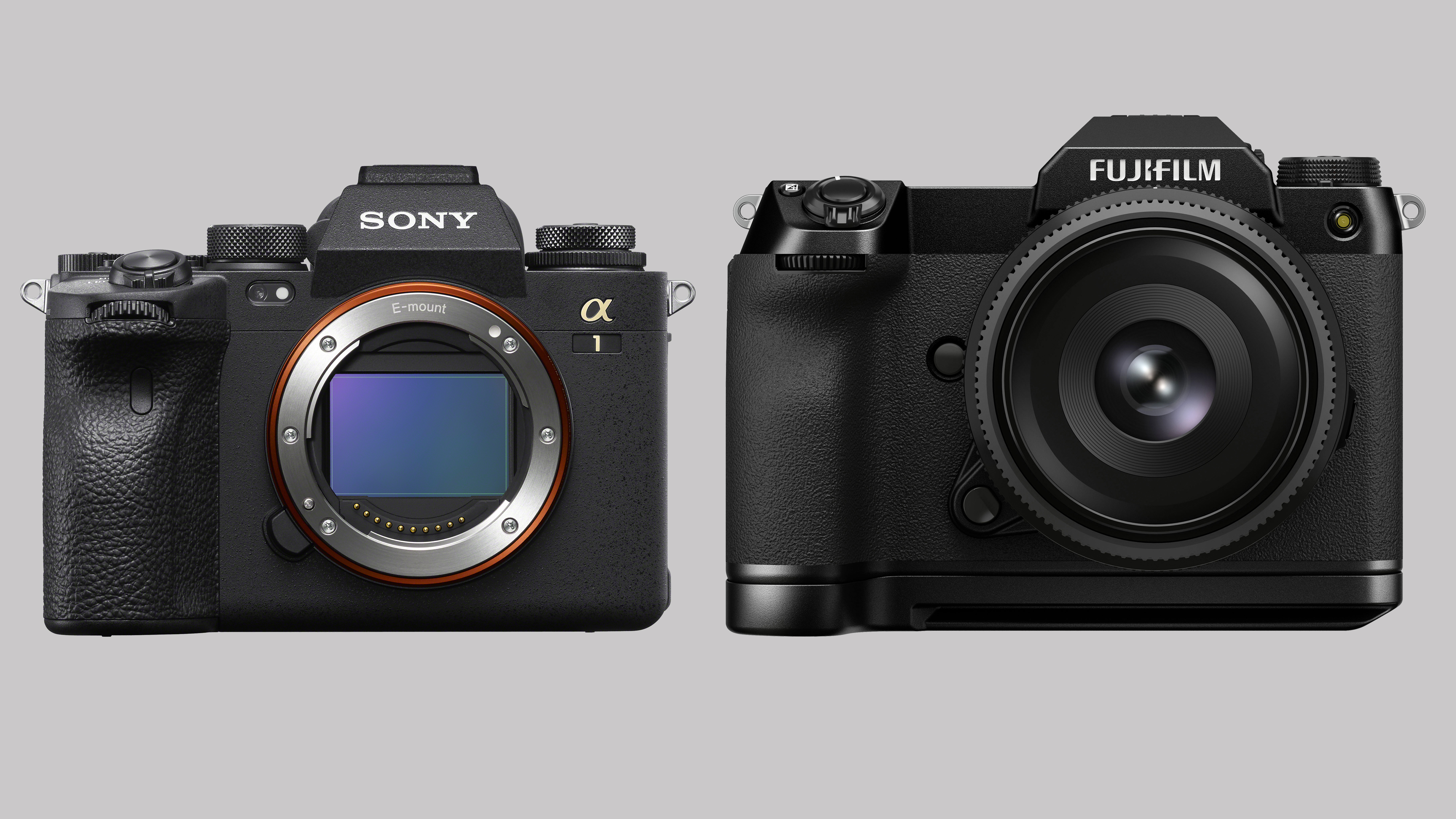The $6,000 question: Get a 50MP Sony A1 or a 100MP Fujifilm GFX 100S?
Got $6K? Then should you get a 50MP full-frame Sony A1 or a 100MP medium format Fujifilm GFX 100S?

It's been an incredible week for new kit, with the Sony A1 and Fujifilm GFX 100S both announced less than 24 hours apart. Of course both cameras have their unique selling points, but at the same time they both cost in the region of $6,000.
So, if you've got the cash to spend, what should you do – drop $6,498 on the Sony A1 or invest $5,999 in the Fujifilm GFX 100S?
On the surface, it seems like a no-brainer. The GFX 100S is a 102MP medium format camera, while the A1 is a 50.1MP full-frame affair – so with the Fujifilm you get a sensor that's 67% larger, with twice the resolution, for $500 less.
Pretty simple math, right?
Of course, things aren't quite that simple. Even if we stick rigidly to resolution, the Sony boasts Pixel Shift Multi-Shot that enables it to produce 199MP images (though this requires a completely stationary subject, such as a still life scene). However, the Fujifilm features the ability to shoot 400MP images using the same process.
Let's forget pixel-peeping for a minute, though.
The Sony's headline feature is its 30fps continuous shooting speed – which is faster than any other camera on the market, torching the 20fps top speeds of the best sports cameras. The Fujifilm, by comparison, can only muster a feeble 5fps – but that's understandable, given that it has to read all the data from a gigantic (literally and figuratively) 100MP medium format sensor.
Get the Digital Camera World Newsletter
The best camera deals, reviews, product advice, and unmissable photography news, direct to your inbox!

Okay, so the Fujifilm is better for resolution and the Sony is better for speed. How about video?
The Sony A1 can shoot 8K 30p and 4K up to 120p, in 10-bit 4:2:0 S-Log, with external HDMI recording up to 4K 60p. The Fujifilm GFX 100S can only muster 4K 30p, though it supports DCI, F-Log and HLG, along with ProRes RAW over HDMI. And if you love the full-frame look for video, you'll go crazy for the ultra-cinematic medium format depth of field.
Right, let's talk in-body image stabilization.
The GFX 100S somehow manages to stabilize its enormous medium format sensor to the tune of 6 stops – eclipsing the 5.5 stops provided by the IBIS system in the A1. And, having already used the Fujifilm GFX 100 as an effective street photography camera, we know that the smaller and lighter 100S will be an incredible street shooter – as will the A1, though we've never been blown away by Sony's IBIS.
So then, all things considered, where should you throw that six grand?
Honestly, if you shoot any remotely fast action then the Sony A1 is a no-brainer. (It's also complete overkill, though, and you'd arguably be better to save $2,599 on a Canon EOS R5 and spend the money on glass.) Ditto video, as the A1 is an all-round better 8K and 4K proposition (though, again, a Sony A7S III does the job for $3,000 less).
If you don't shoot sports or video, though, the Fujifilm GFX 100S feels like the better buy. It's cheaper, has higher resolution, better stabilization, and obviously has the elusive 'medium format look' that you simply can't get on a full-frame sensor. (And, with the $500 you save, you're halfway towards a GF 50mm f/3.5 lens…)
Pre-order the Sony A1 at B&H (US)
Pre-order the Sony A1 at Park (UK)
Pre-order the Fujifilm GFX 100S at Adorama (US)
Pre-order the Fujifilm GFX 100S at Wex (UK)
Read more:
Sony A1 vs Canon EOS R5
Fujifilm GFX 100S vs GFX 100
Fujifilm GFX 100 review

James has 22 years experience as a journalist, serving as editor of Digital Camera World for 6 of them. He started working in the photography industry in 2014, product testing and shooting ad campaigns for Olympus, as well as clients like Aston Martin Racing, Elinchrom and L'Oréal. An Olympus / OM System, Canon and Hasselblad shooter, he has a wealth of knowledge on cameras of all makes – and he loves instant cameras, too.
